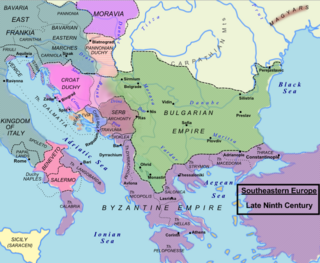Related Research Articles

Year 836 (DCCCXXXVI) was a leap year starting on Saturday of the Julian calendar, the 836th year of the Common Era (CE) and Anno Domini (AD) designations, the 836th year of the 1st millennium, the 36th year of the 9th century, and the 7th year of the 830s decade.

Year 866 (DCCCLXVI) was a common year starting on Tuesday of the Julian calendar.

Year 905 (CMV) was a common year starting on Tuesday of the Julian calendar.
Idris (I) ibn Abd Allah, also known as Idris the Elder, was a Hasanid and the founder of the Idrisid dynasty in part of northern Morocco, after fleeing the Hejaz as a result of the Battle of Fakhkh. He ruled from 788 to 791. He is credited with founding the dynasty that established Moroccan statehood and is regarded as the "founder of Morocco".
The Zenata are a group of Berber tribes, historically one of the largest Berber confederations along with the Sanhaja and Masmuda. Their lifestyle was either nomadic or semi-nomadic.

The Idrisid dynasty or Idrisids were an Arab Muslim dynasty from 788 to 974, ruling most of present-day Morocco and parts of present-day western Algeria. Named after the founder, Idris I, the Idrisids were an Alid dynasty descended from Muhammad through his grandson Hasan. The Idrisids are traditionally considered to be the founders of the first Moroccan state, setting the stage for subsequent dynasties and states centered in this region. Their reign played an important role in the early Islamization of Morocco and also presided over an increase in Arab immigration and Arabization in major urban centers.
Muhammad bin Idris bin Idris bin Abdullah was the third Idrisid sultan of Morocco.

Ali bin Muhammad bin Idris was the fourth Idrisid sultan of Morocco.
Yahya ibn Muhammad was the fifth Idrisid ruler of Morocco.
Yahya ibn Yahya was the sixth Idrisid ruler of Morocco, and the last of the main branch of the dynasty.
Ali ibn Umar was the seventh Idrisid ruler of Morocco.
Yahya III ibn al-Qasim was an Idrisid ruler of Morocco.
Yahya IV or Yahya ibn Idris ibn Umar was an Idrisid ruler of Morocco, ruling in Fes from 905 to 922. For the last three years of his reign, he acknowledged the overlordship of the Fatimid Caliphate, until he was deposed by the Fatimid general Masala ibn Habus. He died in exile at the Fatimid capital of al-Mahdiya in 946.
Al-Hasan ibn Muhammad ibn al-Qasim, known by the sobriquet al-Hajjam was the tenth Idrisid ruler of Morocco, although he held only the capital of Fes and its environs.
Al-Qasim Jannun ibn Muhammad was an Idrisid ruler in Morocco in 937–949.
Abu'l-Aysh ibn al-Qasim Jannun was the twelfth Idrisid ruler and sultan of Morocco. He took over after Al Qasim Gannum in 948 until his death in 954.
Al-Hasan ibn al-Qasim Jannun was the thirteenth and the last Idrisid ruler and sultan of Morocco. He took over after Abu l-Aish Ahmad in 954 until his capture by the Umayyads in 974. He was then exiled to Córdoba, Spain where he died in 985.
Hajar al-Nasr is an ancient fortress located in northern Morocco. It was constructed in the 10th century by the Idrisid dynasty. The archaeological site is situated on a rocky crest overlooking the headwaters of a tributary of the Loukkos River around 40 km almost due east of the modern city of Larache.

The Sulaymanid dynasty was an Arab Muslim dynasty in present-day western Algeria, ruling from 814 to 922. The dynasty is named after the founder, Sulyaman I, who was the brother of Idris I, the founder of the Idrisid dynasty based in Fez. Both Sulayman and Idris, as great grandchildren of Hasan ibn Ali, were sharifs descended from Muhammad.
Al-Ḥusayn ibn ʿAlī al-ʿĀbid was an Alid who rebelled at Medina against the Abbasid caliph al-Hadi. He was killed with many of his followers at the Battle of Fakhkh outside Mecca on 11 June 786, whence he is known to history as the Man of Fakhkh.
References
- ↑ Eustache 1971, pp. 1035, 1036.
- 1 2 3 Benchekroun 2018.
- 1 2 3 Eustache 1971, p. 1035.
- ↑ Eustache 1971, p. 1036.